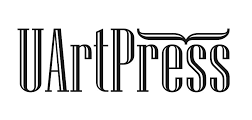Homlokzatépítés, szelfi, nárcisztikus önábrázolás az új médiában
facade building
DOI:
https://doi.org/10.46522/S.2022.02.1Keywords:
self-photos, culture of image, selfie, photographyAbstract
Facade Building, Selfies and Narcissistic Self-Representation in New Media
Representing the human face is not an easy task. Susan Sontag points out that one wants an idealized image of oneself: a photo that shows one’s best side. It feels unfair not to be more beautiful in the picture than in reality. This, in turn, shows that most of the photographs are not honest. In addition to the psychological aspect, there is also a sociological one: the construction of the facade, as described by Goffman in his work “Presenting the Self in Everyday Life”. He thinks building a facade is an identity-building strategy for the public, like Facebook. New media has become part of everyday life. This is especially true for Facebook. Over the past decades, there have been major changes in technology that have affected the culture of image and vision. All of this allowed us to take self-photos at any time and publish them in digital media as soon as possible. A selfie (self-photograph) is a photograph that a photographer takes of himself. A selfie is usually a photograph taken with a cell phone and has distinctive features such as a mirror image. A narcissistic person can make many selfies and publish them on social media to seek constant approval. The narcissist can push selfish behaviour to the extremes, to pathological boundaries. The most striking is that even serious people with significant social status make selfies. It is worth circumventing the assumption that there are scientists who consider the selfie to be a mental illness. The evolving technology encourages users of digital media interfaces to try to create an even more complex user profile of themselves. By enabling self-representation, new media is generating more and more knowledge.
References
ANON.a, é.n. Önportrék és személyiség: egy tanulmány szerint a szelfik azt mondják, ami vagy [online]. [Letöltés időpontja: 2022.05.02.] Elérhető: https://hu.warbletoncouncil.org/selfies-personalidad-1375#menu-1
ANON.b, é.n. Selfie-függőségi betegség. Önportrék – rossz szokás vagy betegség? [online]. [Letöltés időpontja: 2022.05.02.] Elérhető: https://hu.drunkentengu.com/bolezn-selfi-zavisimost-selfi-durnaya-privyichka-ili-zabolevanie-88d00e
ANON., 2012. Fotó-történet. Híres fényképek és ami mögöttük van. Az első önarckép [online]. [Letöltés időpontja: 2022.04.02.] Elérhető: http://fototortenet.blogspot.com/2012/06/az-elso-onarckep.html
ANON., 2013. Robert Cornelius’ Self-Portrait: The First Ever “Selfie” (1839) [online]. [Letöltés időpontja: 2022.04.02.] Elérhető: https://publicdomainreview.org/collection/robert-cornelius-self-portrait-the-first-ever-selfie-1839
ANON., 2014a. Selfie with Obama as Biden Joins Instagram [online]. [Letöltés időpontja: 2022.03.02.] Elérhető: https://news.sky.com/story/selfie-with-obama-as-biden-joins-instagram-10409271
ANON., 2014b. Boy, 14, Aims for Selfie With the Queen [online]. [Letöltés időpontja 2022.04.12.] Elérhető: https://abcnews.go.com/Entertainment/boy-14-aims-selfie-queen/story?id=24297278
ANON., 2022a. A szelfi jelentése (mi ez, fogalma és meghatározása) [online]. [Letöltés időpontja: 2022.08.02.] Elérhető: https://hu.ninanelsonbooks.com/significado-de-selfie
ANON., 2022b. A túl sok szelfi mentális gond is lehet, a pszichológusok szerint! [online]. [Letöltés időpontja: 2022.04.02.] Elérhető: https://ketkes.com/a-tul-sok-szelfi-mentalis-gond-is-lehet-a-pszichologusok-szerint/
ARNOTT, David, 2013. Pope Francis poses for a ’selfie’ at the Vatican [online]. [Letöltés időpontja: 2022.04.02.] Elérhető: https://www.nbcnews.com/news/photo/pope-francis-poses-selfie-vatican-flna8c11028895
CAPUTO, Robert, 2003. Portré és riport. Budapest: Geographia Kiadó.
GARBER, Megan, 2013. The Atlantic, 1913: Duchess Anastasia Takes a Selfie [online]. [Letöltés időpontja: 2022.04.02.]. Elérhető: https://www.theatlantic.com/technology/archive/2013/11/1913-duchess-anastasia-takes-a-selfie/281853/
GOFFMAN, Erving, 1981. A hétköznapi élet szociálpszichológiája. Ford. Habermann M. Gusztáv, Budapest: Gondolat Könyvkiadó.
GOFFMAN, Erving, 1999. Az én bemutatása a mindennapi életben. Ford. Berényi Gábor, Budapest: Pólya Kiadó.
GOMBRICH, Ernst H., 1945. Portrait Painting and Portrait Photography. In: Paul Wengraf (szerk.): Apropos. A series of Art Books, No.3. London: Lund Humphries.
KISS László, 2006. Portréfotók [online]. [Letöltés időpontja: 2020.01.29.]. Elérhető: http://fotozz.hu/cikket_megmutat?cikk_ID=24
POIROT, Lissa, 2021. Most Dangerous Selfies Ever Taken [online]. [Letöltés időpontja: 2022.05.02.]. Elérhető: https://www.farandwide.com/s/dangerous-selfies-6dac0a84fa80490c
SANDRE, Andreas, 2017. The most famous selfies of all time [online]. [Letöltés időpontja: 2022.05.01.] Elérhető: https://hackernoon.com/the-most-famous-selfies-of-all-time-2480023beb5c
SONTAG, Susan, 1981. A fényképezésről. Tanulmány. Ford. Nemes Anna, Budapest: Európa Könyvkiadó.
WALKER, Hunter, 2014. The 13 Types Of Political Selfies [online]. [Letöltés időpontja: 2022.05.02.]. Elérhető: https://www.businessinsider.com/13-types-of-political-selfies-2014-4#the-triple-selfie-3.
Downloads
Published
How to Cite
Issue
Section
License

This work is licensed under a Creative Commons Attribution 4.0 International License.
CC-BY permits any use, reproduction, distribution, self-archiving and citation of the work as long as the authors are credited. The complete bibliographical data of Symbolon Journal must also be indicated, which you can find in the How to cite section on this page. If possible, please also place a link leading to the original publication.
Copyright of the paper belongs to the author(s).








